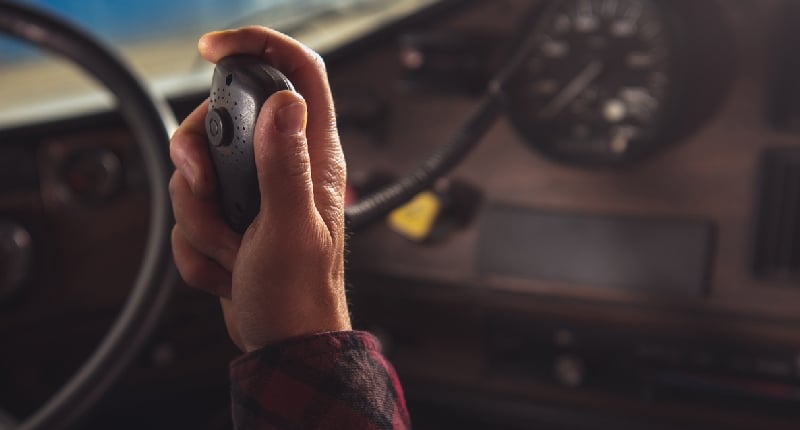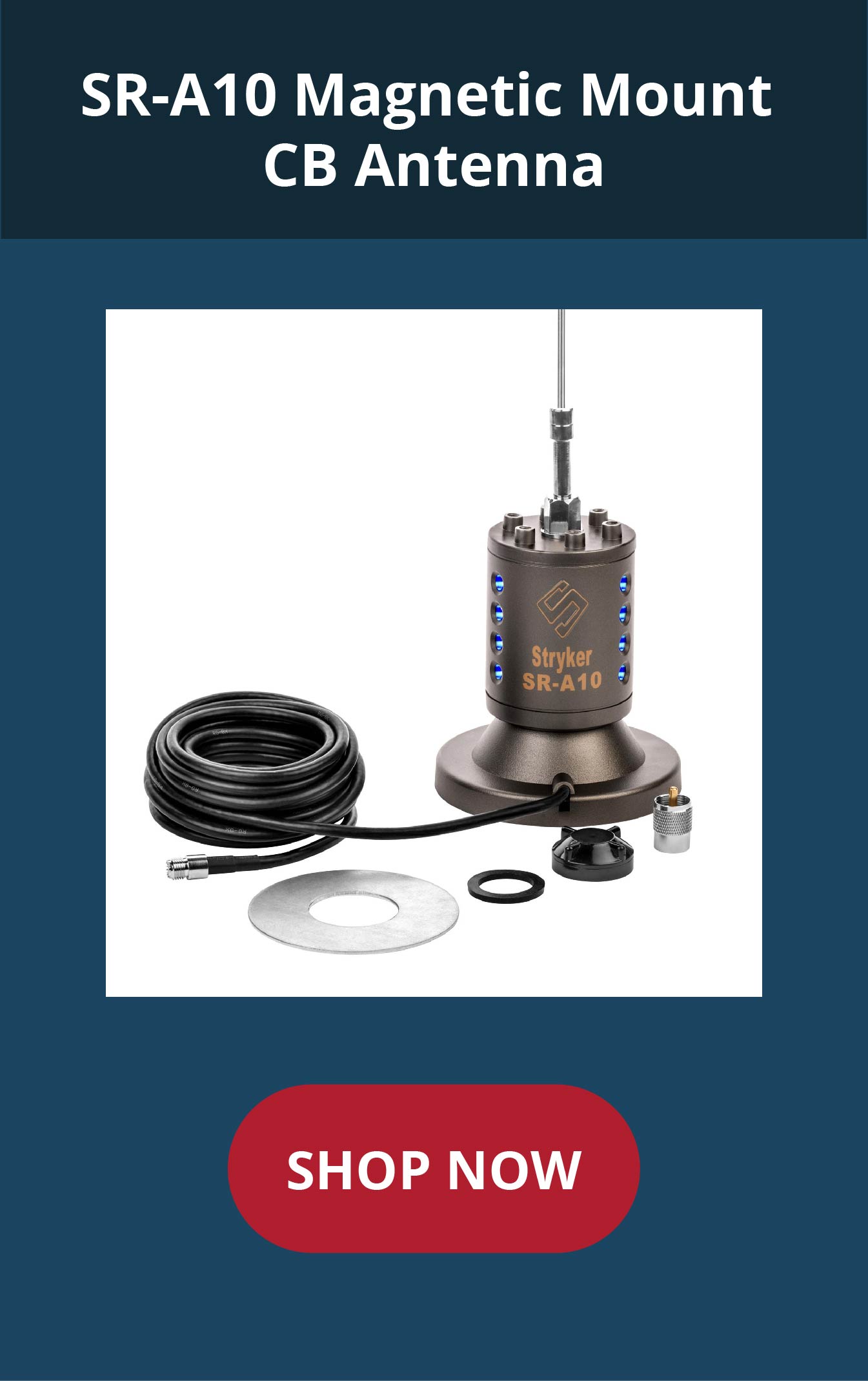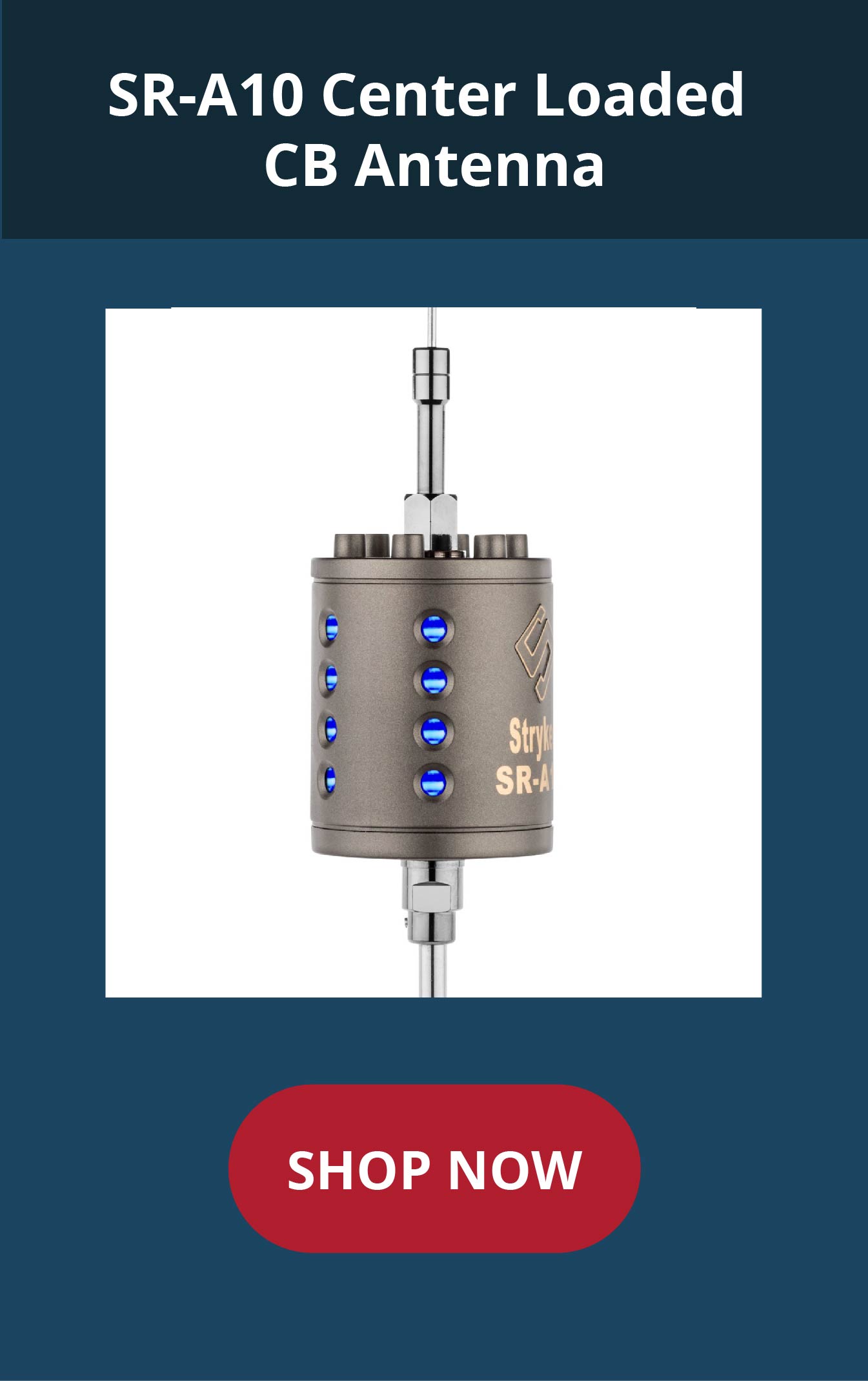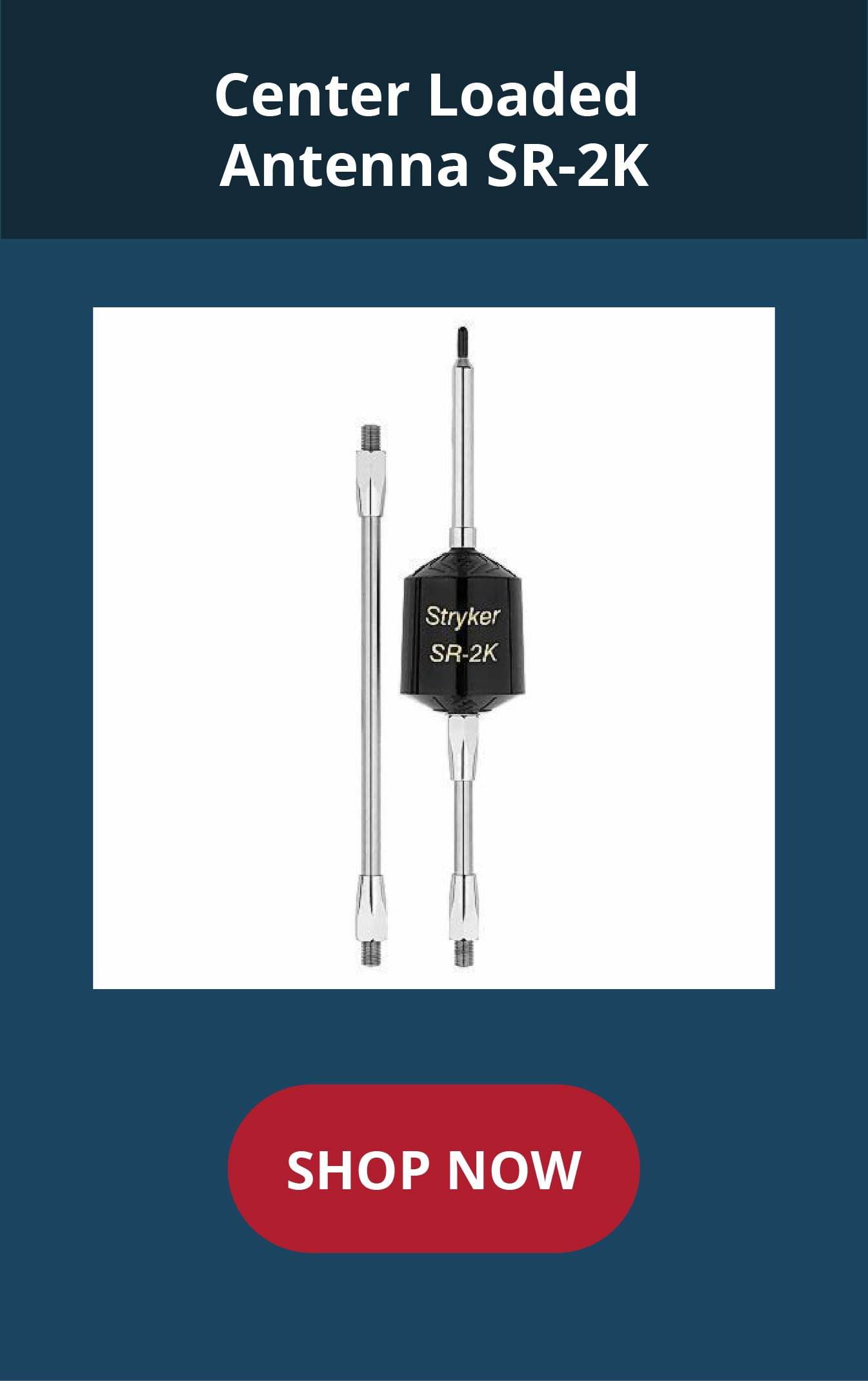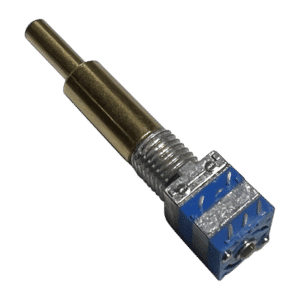Citizens Band radios (CBs) are a time-tested type of two-way radio communication used for short-distance, person-to-person voice communication. CB radio users operate on 40 frequency channels in the 27 MHz band, sending only one transmission at a time per channel. These easy-to-use radios are especially popular among truckers and in remote areas that lack reliable cell service.
The components of a CB radio are simple: a few essential knobs, a transceiver microphone, a digital display, and a coaxial cable to connect the antenna. But before you buy, it’s a good idea to understand the types of CBs and how they’re used.
Types of CB Radios
Mobile CB Radios
Mobile CB radios are the most popular because they connect drivers who exchange important information while on the road. Truck drivers, off-roaders, and RV owners all use mobile CB models.
The chassis comes in different sizes (generally about 8”x2”x8”), connects to the vehicle battery, and is installed either on the dashboard or floor. Be sure to measure your vehicle’s interior so you can choose a model that fits well. Mobile CB radios vary in style and price from basic radios to expensive models with upgrades like an SWR meter, instant channel 9, a public address system or Multi-Band capability. As a general rule, mobile CB radios have a better receiver and clearer sound than the smaller, more portable versions.
All-In-Handset CB Radio
All-In-Handset compact CB radios are ergonomically designed with the controls built into the handset to allow for one-hand control. Because the controls are in the handset, these units have a larger microphone and a smaller base unit. The unit usually plugs into the vehicle’s 12V accessory socket and weighs about two pounds. Their compact size and easy installation make them a good choice for installation in smaller vehicles.
Base Station
A Base Station CB radio is operated from a stationary location, such as a home or office, and is powered through an AC wall outlet. Base stations have a built-in AC power supply and the user interface is designed for desk use. They typically have more features than other types of CB radios so they tend to be more expensive. These high-end models are ideal for both business owners and hobbyists.
To ensure optimum performance, these CB radios require a base station antenna with a ground plane kit. These kits have radials extending up to six feet long off the base to improve the performance of the base station.
Handheld Radios
Handheld CB radios are a mobile transceiver similar in appearance to an FRS walkie-talkie but with much greater range and more channels. GMRS radios are also handheld, but they require an FCC license and are primarily used for outdoor and worksite needs. Handheld CB radios offer flexibility for different situations because they are compact and portable. They’re ideal for traveling by foot, horseback, motorcycle, or bicycle. Additionally, the small size makes them convenient for smaller vehicles or when a permanent CB radio installation is not practical.
Handheld CB radios can be converted for use in vehicles by connecting a magnet mount or fixed-mount CB antenna; simply remove the radio’s rubber antenna and attach a connector for the car-mounted antenna. They usually have a 12V auxiliary adapter plug for the vehicle’s accessory socket in addition to battery-power. Some models have rechargeable battery packs or incorporate rechargeable AA batteries. Keep in mind that they’re usually limited to about 2 watts of power.
Common Uses of CB Radios
Even with the widespread use of cell phones, 40-channel CB radios continue to have a loyal following because they don’t rely on cell towers and are easy to use. CBs are the go-to option for a variety of situations where communication is important.
- Off-road and Hiking: CB radios work in areas without cell service, so many off-road vehicle groups require members to have a CB radio. Users can monitor the CB for emergency warnings and get advice on navigating specific trails. Hikers appreciate the radio’s ability to request help when needed.
- Traffic alerts: Truckers use CB radios for real-time traffic alerts such as crashes, construction, gridlock, or police activity. CB radio users can notify trucks when it’s safe to pass or merge, helping to prevent confusion during heavy traffic.
- Weather channels: A CB radio keeps you informed about weather alerts, storms, environmental catastrophes, and other threats.
- Boating: Because cell service is virtually non-existent on the open water, boaters depend on marine radios and CB radios to keep them safe; multi-band radios can access marine channels as well.
- Hunting: CB radios work in remote areas, allowing communication between groups.
- Travel: CB radios will function in lousy weather or mountainous terrain. Easy communication between a group of vehicles traveling together makes them popular with RV travelers, motorcyclists, and truck drivers.
CB Radio Features To Consider
While anyone can get started with a base model CB radio, more experienced users look for full-feature radios. To find the best CB radio for your needs, consider the following features:
Radio Size and Durability
One of the most important radio features to consider is the size of the transceiver. CB radios range in size from small, hand-held portable units to large, full-chassis base units. It’s important to consider where your radio will be mounted and to choose a CB radio model that will fit well in your space. For example, Jeep and off-road vehicle owners usually have little room in their cabs and tend to use smaller radios. RV and large-truck owners with ample room have a wider range of radio models to choose from.
Durability is a key factor for CB radios that will be used outdoors or on the road. Be sure to select a CB radio model with high durability ratings as well as compatibility with secure mounts.
Transceiver Modulation: AM, FM, and SSB Mode
All CB radios operate on the same 40 channels within the 27 MHz band; however, there are three different modes that vary in quality and range. You can switch between modes, but both the sending and receiving CB radios must be using the same mode. As you get started shopping for a CB radio, it’s important to choose which combination of modes works best for you.
Traditional CB radios transmit in AM mode, so base models come standard with AM mode. From there you can add FM and/or SSB mode.
FM mode is an option available only since 2021 when the FCC began permitting the use of FM CB frequencies. This mode provides close-range higher sound quality because it locks onto the strongest signal and decreases background noise and interference. This mode is easy to use and an affordable upgrade from AM only.
CBs equipped with Single Sideband mode (SSB) use either the Upper Sideband (USB) or Lower Sideband (LSB) of the AM range to enhance transmission clarity and range. Radios equipped with single sideband (SSB) also have an additional control called a “voice lock” or “clarifier,” which is adjusted to clarify signals received when using SSB. You may want the “Frequency counter” feature when you are operating on single sideband mode and need to adjust the frequency on which your radio is receiving or transmitting. An SSB CB radio offers more power and greater range than AM mode, so expect to pay more for this feature.
Multi-Band Capability
Multi-band CB radios allow users to receive communications on multiple bands because they pick up a broader spectrum of radio waves. Multi-band radio includes VHF, UHF, CB, HAM, AM, and FM all in one unit for a versatile communication system that picks up shortwave, emergency, aviation, and marine bands. Multi-band radios are excellent for emergencies when listening to public safety communications is critical. Most multi-band radios operate as plug-in models, but some are designed to be portable and run on batteries. In addition to using the CB channels, amateur radio users who are licensed with the FCC can broadcast on Ham radio channels.
SWR Meter
SWR meters measure your radio transmission’s standing wave ratio (SWR) to ensure your antenna is working properly. This can be a convenient, built-in feature of your radio or an add-on. The SWR meter measures if there are discrepancies between the transmitted and reflected signals, helping to prevent damage and improve your signal when installing and tuning your radio antenna. While a separate SWR meter is best for tuning a CB antenna, many CB radios have a built-in meter to help with troubleshooting.
Weather Alerts
The National Oceanic and Atmospheric Administration (NOAA) weather alert feature transmits a unique tone and the CB radio sounds an alarm to warn of the danger. The National Weather Service will send out alarm tones that interrupt your channel and even come through when your radio is off (provided it is still connected to power). An AM/FM CB radio with NOAA weather alerts is one of the most popular configurations for CBs.
Channel Scanning and Presets
On a CB radio, channel scan finds an active channel where people are talking and automatically stops there. This safety feature keeps the driver’s eyes on the road while searching for conversations. This is particularly helpful because certain CB channels have designated uses that are predominantly for the benefit of truckers.
Channel 9: emergency channel for communication about first response and accidents
Channel 19: communication about traffic, speed traps, etc.
Channel 6: truckers use this channel to talk about traffic and road conditions
Channel 10: communication with weigh stations and inspection places
Noise Control
Noise interference can easily ruin your experience with your CB radio. There are multiple features to help limit background noise and improve sound quality, including squelch control, RF gain, NB/ANL, or a Hi-Cut filter.
Squelch Control
Radio operators can turn up squelch control to quiet background static, only letting through strong, direct signals. Be careful not to turn squelch too high, or it may block wanted signals that happen to be weak or far away.
RF Gain
RF gain is similar to squelch control, but acts as a sensitivity filter. RF gain controls your radio’s ability to receive distant or close by signals, which in turn affects the level of noise your radio picks up.
NB/ANL
The Noise Blanker (NB) and Automatic Noise Limiter (ANL) are features included in most mobile CB radios, and are necessities for operating a radio in a truck. NB/ANL are noise filters, reducing interference from outside sources such as power lines, ignition noise, inverters, or engine noise.
Hi-Cut Filter
The hi-cut filter is another way of reducing static by removing high frequencies that make up a significant portion of white noise. Cutting higher frequencies also improves the clarity and sound quality when receiving communications.
Bluetooth Capabilities
Radios with bluetooth capabilities allow for hands-free conversations through your CB radio using your cell phone or bluetooth headset. This feature reduces the risk of distracted driving, while still letting you communicate with family and friends or make work-related phone calls.
Display Lighting
Color LCD display is a key feature that comes into play when driving at night, during bad weather, or any kind of dark driving conditions. Backlighting makes the radio screen easy to read, and some radios come with backlit knobs so drivers can easily identify where to make adjustments to their radio. Some radios have customizable night and day color display settings. Even if your radio doesn’t come with illuminated controls, you can install a lighted radio knob kit to make it easy to operate your radio in the dark.
Talkback
This feature allows you to hear your voice when you transmit so that you can adjust volume and clarity. Your voice will come either through the CB speaker or an external speaker.

General FCC Regulations for CB Radio
– No license is required.
– CB service operates on 40 shared channels on a “take-turns” basis, meaning no CB channel is assigned to a specific individual or organization.
– The FCC allows 4 watts of power; 12 watts of transmit power for SSB.
– CB users are limited to 5 minutes of continuous talk with another station and must wait at least one minute before starting another communication on the same channel.
– CB equipment used in the USA must be FCC-certified and labeled by the manufacturer.
– The FCC does not allow raising the power output of a CB unit beyond the 4 watt maximum, attaching a power amplifier, or modifying the unit internally.
– The FCC prohibits communication attempts with CB stations over 155.3 miles away.
Get the Most Out of Your CB Radio with High-Quality Accessories from Stryker
Remember these important features while you’re comparing models of CB radios so you make the best purchase possible. Be sure to pay attention to the type of warranty offered by the manufacturer. Online reviews can help you evaluate the performance of different radios from brands with outstanding reputations.
Whichever CB radio model works best for you, equipping your radio with quality accessories is necessary to achieve optimal performance. Enhance your truck radio’s quality, range, and durability with Stryker’s best-in-class CB antennas, CB antenna accessories, and CB microphones. Our lineup of high-quality radios, antennas, and accessories is proof that Stryker Radios is all about taking care of our customers.

